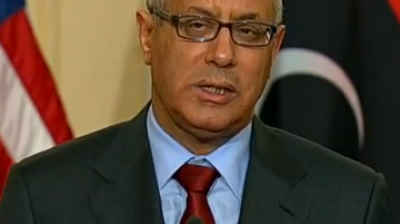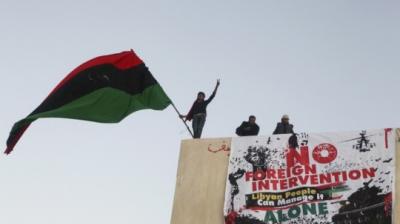The “Al-Qa’idazation” of Libya? Understanding Libyan jihadism
The capture on Libyan territory of the mastermind of the 1998 terrorist attacks on the American embassies in Nairobi and Dar es Salaam stirred the international media. With the recent terrorist take-over of Nairobi’s upper class shopping mall fresh in mind, many reporters where quick to conclude that the presence of Al-Qa’ida veteran Abu Anass al-Liby in Tripoli proves that Al-Qa’ida has taken definite root in Libya. Recent reports of Libyan jihadists taking the streets to protest Al-Liby’s arrest complete this picture. The brief abduction of the prime minister Ali Zeidan by armed brigades indicates that other actors are also outraged over the capture of the wanted terrorist Al-Liby and the breach of Libyan sovereignty. Indeed, Libya’s strategic location on the edge of the Sahel and facing Europe with porous borders and weak state control could make it an attractive support base for global jihad. But depicting the country as the new epicenter of transnational terrorism ignores the fundamentally distinct features of Islamic extremism in Libya.
Libyan jihadism in relation to transition politics
Two years into Libya’s transition, the establishment of a public interest state seems a distant utopia. Instead, Libya’s nascent democratic state has become the site for a merciless zero-sum struggle in which elites compete for the control of state institutions and profits from exceptional rents (mainly the revenues from oil and gas). Strategically connected to the country’s powerful militias – many of which fought in the uprising against Qadhafi – Libya’s political actors have proven to be capable of organizing a strategy of armed violence to further their narrowly defined interests and ensure their own survival. In that sense, political control over militias is not as absent as some observations suggest. Violence, after all, is but one means to extend influence.
The phenomenon of Islamic extremism in Libya must be understood as part of the post-revolutionary political and security landscape. Many of today’s leading Islamic extremist figures in Libya can be traced back to the anti-Qadhafi Islamist movement under the umbrella of the Muslim Brotherhood, and its armed offshoots. Since the 2011 revolution, the Muslim Brotherhood has fragmented into a wide spectrum of interest groups. Many of these interest groups are now connected to the de facto ruling Justice and Reconstruction Party; the Muslim Brotherhood’s political wing.
Others, in particular the younger generation of Islamists, have regrouped to pursue a more militant jihadist agenda. A case in point is Ansar al-Shari’a, the organization that is held responsible for the attack in which US Ambassador Stevens was killed in 2012 and the bombing of the French embassy in 2013. Initially, these groups supported the uprising against Qadhafi and they were part of the same anti-establishment coalition as the Muslim Brotherhood politicians in the center. As such, they were granted access to partial favours and rents.
However, now that the Muslim Brotherhood seems to have consolidated its grip on the nascent state, jihadist groups have started to more overtly aim for the overturning of the Libyan political order and its replacement with a more explicitly Islamic state. Although they are undoubtedly inspired by the broader Al-Qa’ida ideology, these groups’ objectives are still domestic rather than transnational and they do not yet seem intent on forging transnational partnerships with like-minded organizations. This is despite the ongoing strategy by Al-Qa’ida in the lands of the Islamic Maghreb (AQIM) and late Bin Laden’s Al-Qa’ida Senior Leadership (AQSL) to win-over Libya’s homegrown jihadists for their global agenda – which also explains why Al-Liby was found and arrested in Tripoli.
This characterization of jihadism in Libya does, however, not imply that wide-felt concerns about the “Al-Qa’idazation” of the country are invalid. There is a potential risk that Libyan jihadist groups convert their ideological linkages with transnational like-minded groups into direct cooperation and sponsorship. With the consolidation of the power of the Muslim Brotherhood, the jihadist groups are being pushed into the margins and their access to the rents distributed by Tripoli is narrowing. The lack of comprehensive political and economic transformation of the state has ensured a certain continuity of violent patronage politics – practiced both at the center and periphery. Pushing extremist elements to the periphery within Libya may prompt them to look to foreign patrons like Al-Qa’ida, as an attractive alternative; an unrivaled ideological example; and a more than welcome sponsor.
Rethinking international responses
It is safe to assume that southern Libya currently is Al-Qa’ida primary logistical stronghold in North Africa and that the east serves mainly as a transit hub for international jihadists on their way to Syria. The country’s vastness and the chaotic security situation allow free movement of various illicit actors, and its porous borders facilitate regional arms trade and cross-border smuggling networks. As such, policy responses to curb the threat of jihadism in Libya, and to prevent Al-Qa’ida from using the country as a logistical haven, have mostly concentrated on improving border security and boosting the capacity of Libya’s formal security sector – without accounting for who actually is in (partial) control of these sectors. Certainly, such support strategies are not constructive for building a public interest state in Libya.
As much as these counter-terrorism strategies could disrupt terrorist activities, there is little evidence that this would counter mobilization and radicalization and the opening of Libya not only as a logistical hub of the global jihadist agenda but also as an ideological center of jihadist ideology. By strengthening security bodies that are now being filled with Muslim Brotherhood affiliated militia members, these strategies may reinforce the political context characterized by patronage and exclusion. It is precisely this (deliberate) marginalization of actors from positions of power that nourishes radicalism and may eventually drive homegrown Libyan jihadists into the arms of the broader Al-Qa’ida movement.
The story of Abu Anass al-Libya notwithstanding, in-depth analysis of Libya’s transition shows that Libya’s homegrown jihadists are not yet usurped by Al-Qa’ida, and their objectives do not yet go beyond establishing an Islamic state in Libya. As such, policies aimed at tackling the threat of jihadism in Libya should concentrate on the ideological risk profile of groups like Ansar al-Shari’a. By removing the incentives for extremist groups to join the transnational jihad, we can prevent Libya’s fragile transition from being lost to Al-Qa’ida and subverted by global counter terrorism.





